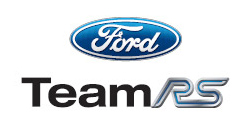 | |
| Company type | Car tuning |
|---|---|
| Industry | Motorsport Automotive engineering |
| Predecessor | Ford Special Vehicle Engineering |
| Founded | Boreham, Essex, England (1963) |
| Founder | Ford Motor Company |
| Defunct | 2015 |
| Successor | Ford Performance |
| Headquarters | , |
Area served | United Kingdom |
Key people | David Pericak [1] Global Director Ford Performance Jamal Hameedi [2] Chief Program Engineer Global Performance Vehicles Kerry Baldori [3] Chief Functional Engineer Global Performance Vehicles |
| Products | Racing cars Performance cars |
| Parent | Ford Motor Company |
| Divisions | Ford Racing |
| Subsidiaries | Ford's Performance Vehicles Ford's Team RS |
| Website | fordracing.com |
The Ford TeamRS was Ford Motor Company's European performance car and motorsport division for Ford Racing activity. The Ford RS badge was born for rally racing, the RS stands for Rallye Sport. TeamRS was the successor to Ford Special Vehicle Engineering.
Contents
TeamRS has been superseded by a global organisation called Ford Performance. They are responsible for the conversion of the 2006 Ford GT from US-Spec to Euro-Spec.
